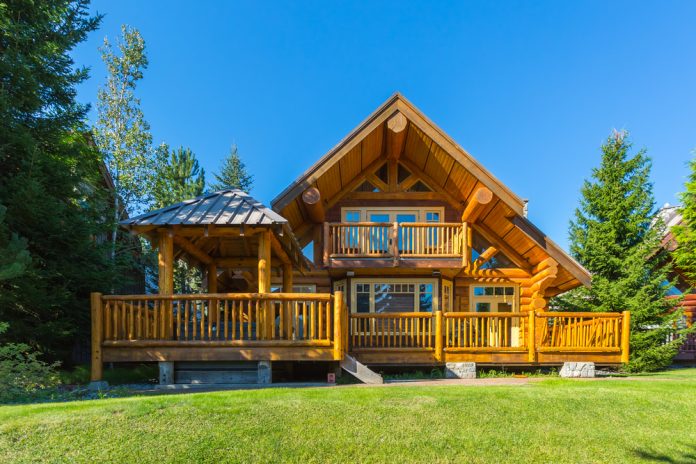So, You Want to Buy a Log Home – Welcome to the Club!
There’s something magical about a log home. Maybe it’s the warm, rustic charm. Maybe it’s the fantasy of sipping coffee on a porch with mist rolling over the mountains. Or maybe you just want to feel like a modern-day frontiers person, minus the whole wrestling-bears-for-your-supper thing.
Whatever the reason, buying a log home can be a dream come true — if you know what to watch for. Because as beautiful as log homes are, they come with quirks, maintenance needs, and (if you’re unlucky) some hidden surprises that’ll make your wallet cry.
That’s where this guide comes in. Let’s break down what you should look for before signing on the dotted line — so your cozy cabin doesn’t turn into the world’s most expensive firewood pile.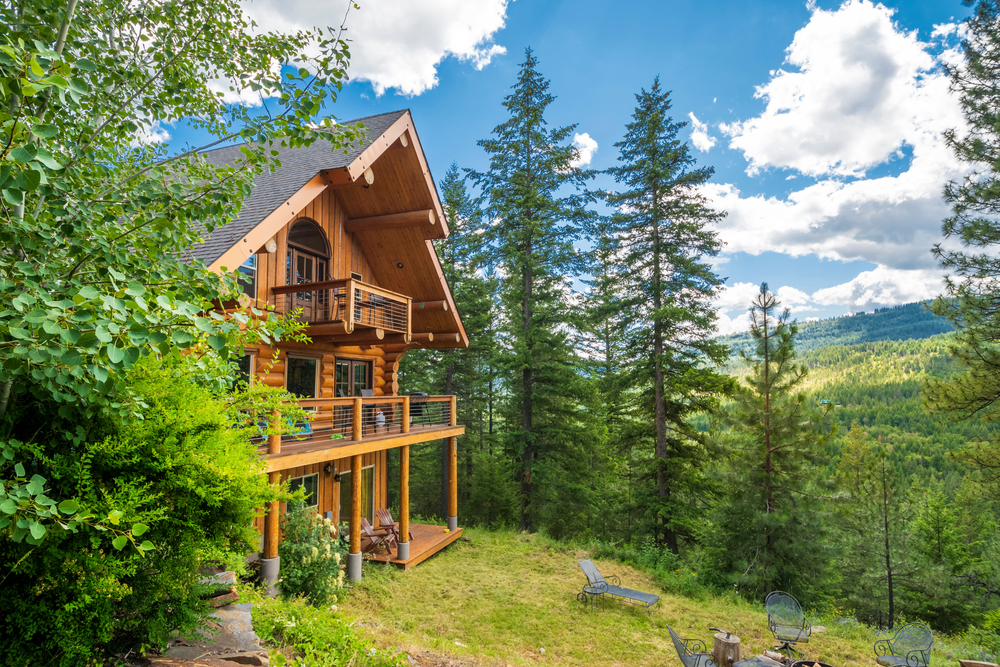
The Importance of a Log Home-Savvy Inspection (Because Not All Inspectors Speak “Log”)
If you’ve ever bought a regular home — you know, the kind wrapped in drywall and vinyl siding with a questionable carpeted bathroom or two — you probably called in a standard home inspector. Makes sense. They’re great at finding things like leaky pipes, outdated electrical panels, and that mysterious stain creeping across the ceiling.
But when it comes to log homes, you’re playing a whole different game. Regular home inspectors, even the good ones, are trained to spot issues in conventional construction, where you’ve got studs, insulation, and layers of building materials forming the walls. Log homes, on the other hand? The walls are the structure, the insulation, and the design feature — all at the same time.
That’s a lot of responsibility for one log to carry, and unfortunately, not every inspector knows how to evaluate whether those logs are doing their job.
What Makes Log Homes So Different?
Log homes move — a lot. Logs expand and contract with changes in temperature and humidity, sometimes shifting enough to create visible gaps or cracks. That movement is natural, but it also creates opportunities for water, pests, and rot to sneak in.
Add to that the fact that each log is unique, even in the same house. A log on the north side might stay solid and dry for decades, while a log on the weather-beaten west side could be one rainy season away from turning to mush.
This is why you can’t rely on a general home inspector to assess a log home properly. They may be fantastic at spotting foundational cracks or faulty wiring, but they may not know the subtle signs of hidden rot, improper chinking, or log crown water damage. Some won’t even think to inspect how the logs were originally milled and stacked — something that can affect how the home performs long-term.
The Devil’s in the (Log-Specific) Details
A seasoned log home inspector knows to look for:
- Weathering patterns: How rain, snow, and sun have affected different sections of the home.
- Joinery and connections: How logs were cut, notched, and stacked — and whether they were properly sealed at the joints.
- Log crown overhangs: Whether those charming extended log ends are secretly soaking up rainwater like wooden sponges.
- Flashing failures: Around windows, doors, and decks — all notorious trouble spots in log homes.
- Insect activity: Powder post beetles, carpenter ants, and termites are all particularly fond of log homes.
- Hidden rot: Especially under decks, where logs often remain damp and out of sight.
A regular inspector might walk through and say, “Looks fine to me!” — especially if the home has a fresh coat of stain and smells like pine-scented happiness. A log home inspector, however, will spot the slight softness at the bottom of a corner post or the hairline crack on the upper side of a log that’s quietly funneling rainwater into the wall.
Think of It Like This…
Hiring a general inspector for a log home is like taking your lifted 4×4 truck to a bicycle mechanic for an engine check. Both involve transportation, sure — but you probably want someone who understands engines, suspensions, and why your truck is making that unsettling clunk every time you hit a speed bump.
Real Talk: Experience Matters
The absolute best thing you can do before buying a log home is to hire someone who has inspected dozens, if not hundreds of log homes. This isn’t the time for a “first log cabin inspection” training session. Ask them questions, like:
- How many log homes have you inspected?
- What’s the most common issue you find in older log homes?
- Do you have experience with both handcrafted and milled log construction?
- Are you familiar with the specific stains, sealants, and chinking products used on log homes?
- Can you provide a sample report from a previous log home inspection?
If they stare at you blankly when you mention “chinking,” run.
Pro Tip:
Some homebuyers assume their general home inspector will “just figure it out” when faced with logs instead of drywall. Don’t fall into that trap. There are specialized log home inspectors out there — seek them out. And no, binge-watching a couple of log cabin reality shows doesn’t make someone qualified to judge your potential dream home.
Common Log Home Red Flags (a.k.a. The Horror Movie Scenes You Don’t Want)
When you’re walking through that charming log cabin, it’s easy to get distracted by the exposed beams and the antler chandelier. But before you get swept away, watch for these warning signs:
Rotten Logs – The Silent Killers
Wood rot is the number one party crasher in the log home world. It happens when moisture gets where it shouldn’t and sits there long enough to invite fungus to the feast.
Where should you check for rot? Focus on:
- Logs near the ground.
- Logs under deck attachments.
- Logs beneath roof overhangs.
- Anywhere logs meet another surface (like decks, stairs, or posts).
Poke the wood gently with a screwdriver. Soft wood is a bad sign — wood should fight back, not feel like a sponge.
Flashing Fails – When Your Home’s Raincoat Leaks
Flashing — the metal or plastic barriers around windows, doors, and decks — keeps water from sneaking inside your logs. When flashing is poorly installed (or missing entirely), rainwater finds tiny cracks and starts wreaking havoc.
Logs don’t mind a little rain on the outside, but they hate getting soaked from the inside. If your potential log home has suspicious water stains or signs of swelling near windows or doorframes, flashing failure could be to blame.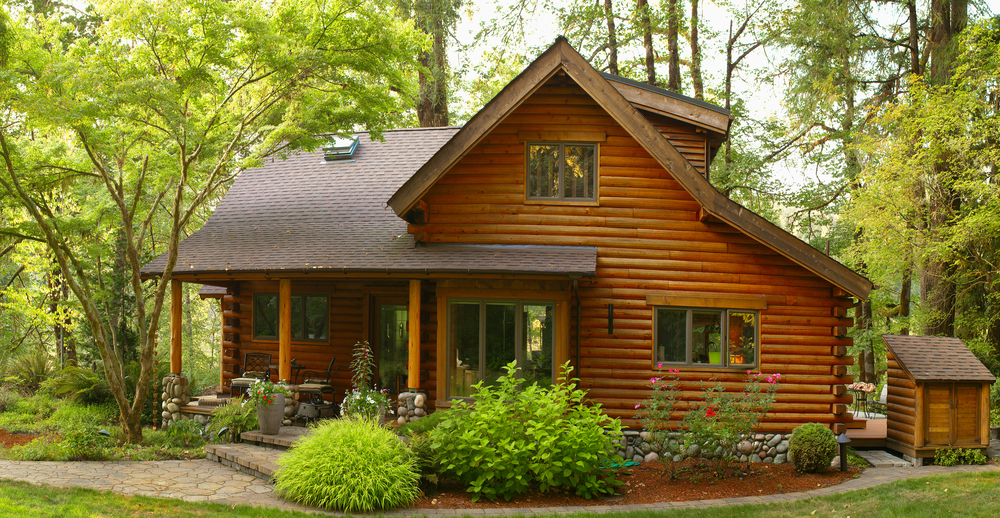
The ‘Drip Line of Doom’ – What’s Living in Your Splash Zone?
Logs love fresh air and sunshine. What they don’t love is constant moisture from things like:
- Decks and stairs attached directly to logs.
- Firewood stacked against the house.
- Propane tanks sitting in the splash zone.
- Shrubs planted too close to the walls.
All these things trap moisture and give rot the perfect home to move into. Keep your logs dry, and they’ll stay happy.
Overhangs – Bigger Is Better
Roof overhangs are your logs’ first line of defense against rain, snow, and sun damage. Ideally, you want deep overhangs — at least 24 inches, more if you’re in a rainy area.
Short overhangs = more water running down your logs = more problems.
Log Ends (Crowns) – Nature’s Tiny Water Traps
If the ends of logs stick out beyond the roofline, they can act like little wooden cups, catching rainwater. And unless the logs were perfectly sealed and maintained (spoiler: they rarely are), that water slowly seeps in, inviting rot and bugs to the party.
The Stain Game – More Than Just Good Looks
Log home stain isn’t just about aesthetics. It’s protection — think of it like sunscreen for your logs.
If the home’s exterior stain is faded, peeling, or uneven, that’s a clue that maintenance may have been neglected.
Ask the Seller:
- What stain brand was used?
- When was it last applied?
- Was the whole house done, or just the “pretty” side?
A good stain job lasts 3-5 years — less if the logs get heavy sun or rain.
Cracks, Gaps & Caulking – All Cracks Are Not Created Equal
If you’ve ever owned anything made of wood — whether it’s a deck, a fence, or even an old cutting board — you know wood loves to crack. It’s how it copes with expanding and contracting as the weather changes. Logs are no different, and some cracking (called checking) is completely normal in a log home.
But here’s where it gets tricky: not all cracks are harmless.
Cracks that run along the top side of a log (the part facing the sky) are like little water slides — except instead of sending kids into a pool, they’re funneling rainwater straight into the core of your logs. Water seeps in, travels along the grain, and finds its way to the heartwood — the very place you don’t want moisture to hang out. Once it’s there, it’s practically sending an open invitation to rot and wood-boring insects.
Bottom Side Cracks? Less Scary
Cracks underneath the logs — the ones facing the interior of your home or facing downward — aren’t as big of a deal. They’re less likely to collect water, so they rarely become a serious problem.
Caulking: Your First Line of Defense
The good news? Most of these cracks can be managed with proper caulking. But, and this is important, not all caulking jobs are created equal. A proper caulk line should blend smoothly into the log, with no gaps, bubbles, or edges that peel away after a season or two. What you want is a flexible, weatherproof seal that can handle the logs shifting with the seasons.
If you walk around a log home and see:
- Lumpy, uneven caulking lines that look like they were applied with a garden hose.
- Caulking that’s pulling away from the logs in long strips.
- Sections with no caulking at all, especially around windows, doors, or rooflines.
…that’s your cue to raise a red flag. Bad caulking jobs are more than cosmetic — they’re a gateway to moisture intrusion, rot, and long-term structural issues. 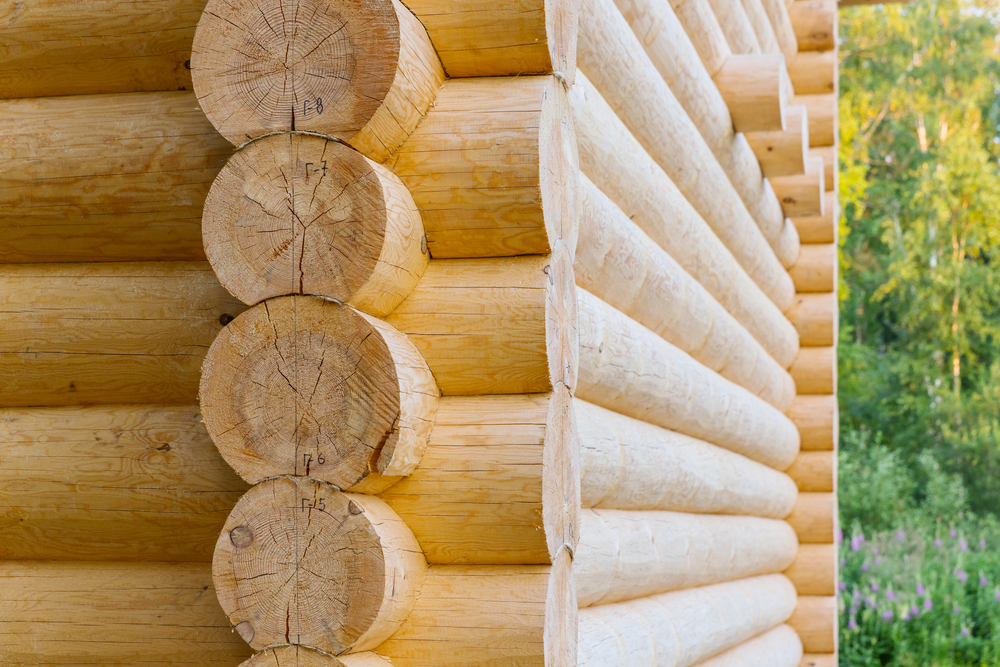
Pro Tip:
Some cracks are large enough that they need more than just a bead of caulk — they may require backer rod (a foam insert that fills the gap before caulk is applied). If you see wide, deep cracks, ask your log home inspector whether backer rod was used. If they look confused, you might need a new inspector.
Bug Patrol – Uninvited Tenants with Tiny Teeth
Bugs love logs — and unfortunately, some of them love logs a little too much. While a friendly cricket on your porch is no big deal, the real threats to your log home are wood-boring insects. These tiny terrors don’t care how charming your cabin is — to them, it’s just an all-you-can-eat buffet.
The Usual Suspects
The three biggest offenders in log homes are:
- Carpenter ants – They don’t actually eat the wood (they’re not termites), but they chew through it to create tunnels and nests, leaving a Swiss cheese situation inside your logs.
- Powder post beetles – These little guys lay eggs inside the wood, and when the larvae hatch, they munch their way out, leaving tiny round exit holes and piles of fine, powdery sawdust.
- Termites – The most infamous of the bunch, termites actually consume the wood, weakening logs from the inside out.
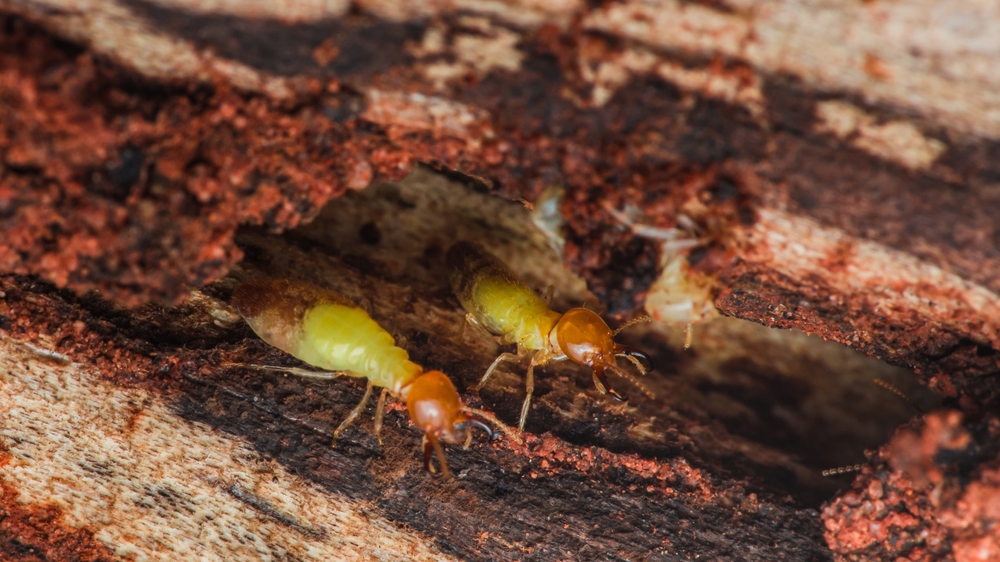
Signs of Trouble
Here’s what you want to watch for:
- Small, round exit holes — about the size of a pinhead.
- Fine, talc-like sawdust (called frass) accumulating near logs.
- Faint rustling or clicking sounds coming from inside the walls (yes, it’s as unsettling as it sounds — imagine hearing tiny construction crews at work in your home).
Bugs Don’t Work Alone
Here’s the important thing: insect problems are almost always a symptom of another issue — usually moisture and rot. Healthy, dry logs are much less inviting to wood-boring pests. Damp, decaying logs? That’s the log home equivalent of rolling out the red carpet and serving appetizers.
What to Do
- If you’re buying a log home, get a thorough pest inspection alongside your log-specific home inspection.
- If the home has had previous treatments, ask for records — some infestations require long-term monitoring.
- Prevention matters — keeping your logs dry and well-maintained is the best defense against these unwanted guests.
Maintenance Matters – This Ain’t a Set-and-Forget Situation
Log homes aren’t the type of house you can ignore for a decade and expect them to stay in pristine shape. They’re more like classic cars — beautiful, capable of lasting forever, but only if you give them regular TLC.
What Log Homes Expect From You
Owning a log home means building a routine maintenance relationship. Here’s what your logs are going to demand — and yes, they’ll know if you slack off:
- Annual Bath Time
- Logs accumulate dust, pollen, mildew, and the occasional bird gift.
- A gentle wash with a log-safe cleaner once a year helps keep grime from damaging the stain and allows you to spot early signs of trouble.
- Stain & Seal Every Few Years
- Your stain is more than decoration — it’s your logs’ sunscreen.
- Most logs need re-staining every 3 to 5 years, depending on climate, sun exposure, and how well the last job was done.
- Seasonal Inspections
- At least twice a year, take a slow walk around the house.
- Check for new cracks, gaps, soft spots, signs of insect activity, or areas where caulking is starting to fail.
- Don’t forget to check the roof overhangs, log ends, and where decks or stairs meet the house — these are the usual trouble spots.
- Keep the Perimeter Clear
- Logs hate being smothered.
- Keep shrubs, firewood piles, and anything else that holds moisture at least a few feet away.
- Make sure rain gutters work properly and splash zones don’t soak your logs.
- Winter Watchlist
- Snow piled up against logs is a recipe for rot.
- Clear heavy snow away from the lower courses of logs.
- Check for ice dams that could send water running down inside the walls.
Neglect Comes at a Cost
Ignore this maintenance checklist, and your log home will get revenge — and it’ll do so in the form of expensive repairs. Rot doesn’t stay put once it starts. It spreads, turning small problems into major reconstruction projects. If you think restaining sounds expensive, wait until you price out log replacement.
Pro Tip:
Don’t assume “no news is good news.” Log homes are great at hiding problems until they’re serious. Regular checkups are cheaper than emergency repairs — and they keep your home looking fantastic, too.
Why a Pre-Purchase Log Home Inspection is Worth Every Penny
Even if the home looks like something out of a magazine — freshly stained logs gleaming in the sun, windows so clean they practically sparkle, and landscaping that belongs in a botanical garden — a log home-specific inspection is essential. Why? Because what’s visible to the eye only tells part of the story.
Let me give you a scenario that could easily happen:
Imagine you find the perfect log cabin tucked in the woods. It’s got all the charm you’re after — a wide wraparound porch, a cozy loft, and maybe even a stone fireplace. You bring in a standard home inspector, who walks through, tests the outlets, runs the faucets, and gives the place a general thumbs up. Everything seems great.
But here’s the part you don’t see — and neither does your regular inspector, because they aren’t trained to look for it. Underneath that beautiful deck, where the logs are tucked away from view, moisture has been trapped for years. The ends of the logs, those beautiful hand-peeled timbers, are slowly rotting away, hidden behind the fresh coat of stain. 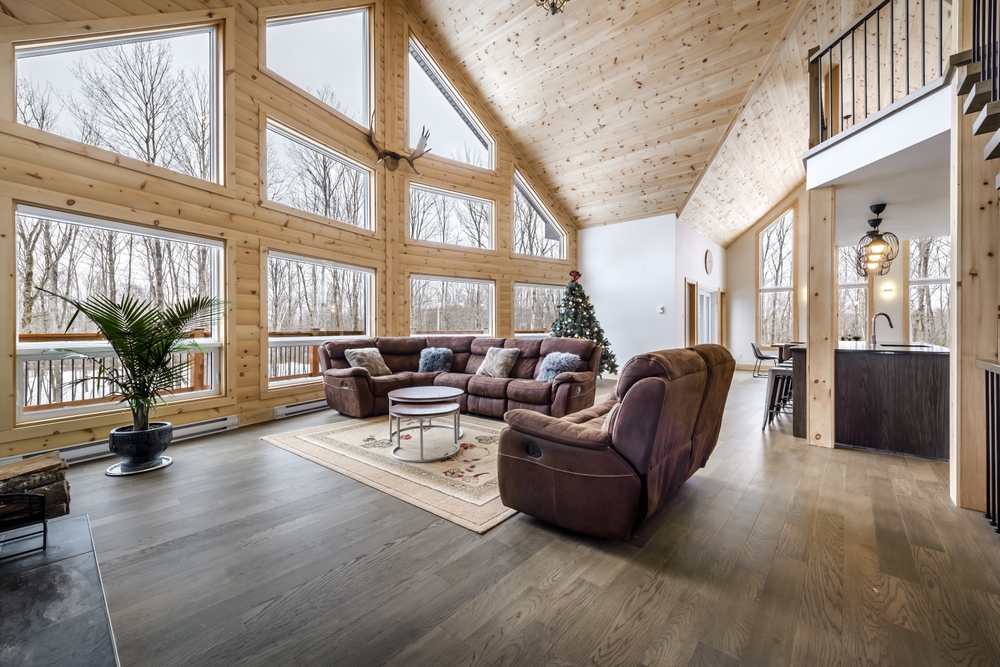
You wouldn’t notice the damage until after you move in — when you lean on the deck railing one afternoon and realize it’s not attached to much of anything. By then, you’re not just dealing with cosmetic issues — you’re facing structural repairs that could easily run into the tens of thousands of dollars.
This isn’t an exaggeration. Rot, insect damage, and water infiltration in log homes can turn minor repairs into major rebuilds if they go unchecked. And the tricky part? Log homes are experts at hiding these issues under beautiful finishes, so it takes a trained eye to catch them before they become your problem.
A log home inspector would have crawled under that deck, checked the log ends for softness, moisture damage, or signs of fungal growth. They would have inspected how the deck was flashed to the house — a critical detail that can make or break a log home’s longevity. They would’ve poked, prodded, and tested areas that a general inspector might walk right past.
The cost of a professional log home inspection is a tiny fraction of what you could end up paying in repairs if serious problems are hiding under that rustic charm. So, before you fall in love with the cabin’s curb appeal, make sure you know what’s going on underneath the surface.
Because in the world of log homes, what you don’t see can absolutely hurt you — and your wallet.
Final Thoughts – Logs Last for Generations (If You Treat Them Right)
A well-built, well-maintained log home can easily outlive all of us — standing strong for generations to come. These homes aren’t just houses; they’re living, breathing pieces of craftsmanship with character, charm, and enough personality to make your drywall-clad neighbors jealous.
But — and this is a big but — they don’t take care of themselves. Log homes reward attention and punish neglect. If you’re the type who enjoys keeping an eye on things, rolling up your sleeves for some seasonal maintenance, and treating your home like the beautiful piece of organic architecture it is, a log home will love you right back.
If, on the other hand, your idea of home maintenance is shrugging at the gutters once a year and hoping for the best — well, you might want to stick to vinyl siding and call it a day.
Bottom Line
Go into your log home purchase with your eyes wide open, not through the rose-tinted lenses of a Hallmark movie. The charm is real, but so are the responsibilities. Hire a log-savvy inspector who knows how to spot problems before they become expensive surprises, and be ready to invest time and effort into regular care.
The good news? If you take care of your log home, it’ll take care of you — providing not just shelter, but a one-of-a-kind living experience that’s equal parts cozy, rugged, and ridiculously photogenic.
Need Backup? Call Us First.
Thinking about buying a log home but not sure what’s hiding under all that rustic charm? That’s where we come in. We know logs inside and out — the good, the bad, and the rotting. Give us a call before you accidentally buy the world’s most expensive compost pile. Trust us, your future self — and your future repair budget — will thank you.

